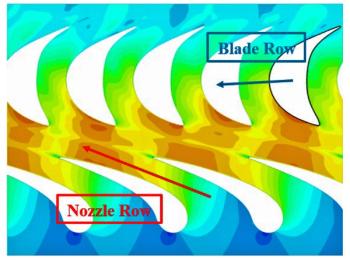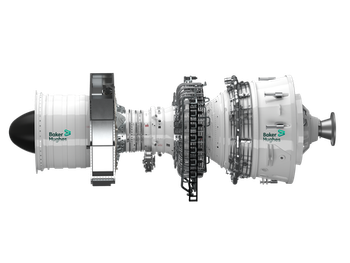
Anti-surge systems for axial compressors
Axial compressors are often employed as air compressors when large capacities are required,
as well as in smaller high-capacity process gas applications such as the first stage of a mixed refrigerant (MR) LNG plant.The problem is that their delicate blades are susceptible to surge-induced damage or separation. Additionally, axial compressors can be challenging due to complex surge line mapping. The surge line can shift because of a slightly different gas condition or composition.
Therefore, axial compressors require dedicated anti-surge systems which should consist of a total of five protection arrangements: anti-surge valves, hot-gas-bypass valves, an inter-stage bleed valve (IBV), an inlet guide vane (IGV) and detection of speed variation. Speed reduction and IGV characterization should be used to map the surge area in a two-dimensional zone.
In addition to anti-surge valves, an axial compressor is often protected by a hot gas bypass (HGBP) recycle loop. Particularly, it is mandatory in case the anti-surge valve is not taken immediately after the compressor discharge. The axial compressor inter-stage bleed valve (IBV) should also be opened to provide sufficient flow to the compressor suction to avoid the surge at initial stage(s).
For an axial compressor, dynamic performance data such as the IGVstroke speed, the control and actuator delay, the valve stroke time, and other system dynamics should be involved in the dynamic model based on accurate and actual information. These data are critical and play important roles in axial compressor system dynamic simulation results, an anti-surge system design, reliability and overall safety. The dynamic model of an axial compressor should be accurately validated considering the criticality of the surge and disastrous consequences of a surge event in an axial compressor.
The IGV stroke time is usually in the range of 3 to 7 seconds. Conceptually, fast response from the IGV system might be considered desirable as it can help unload the axial compressor rapidly. However, the IGV stroke could adversely affect the performance curve such as the distance between the operating point and the surge. Results from some dynamic simulations indicatethat a fast closing IGV mechanism may drive the axial compressor toward the surge. Based on these results, it is suggested that the IGV stroke time be modified to an optimum value for some axial compressors as opposed to the fastest possible value. For some axial compressors, a moderate IGV stroke time (somewhere between 5 and 10 seconds) may prove to be advisable in terms of surge prevention. However, a stroke time for an IBV could possibly be as fast as 2 seconds.
For axial compressors which the surge could initiate at final stages, an inter-stage bleed valve (IBV) fast opening could be problematic, since this action can significantly reduce the gas flow at the final stages. For the inter-stage bleed valve (IBV), an optimum window for the opening time appeared to exist to avoid the surge in either section of the axial stage depending on the axial compressor design and operation. All these optimum values should be identified using accurate dynamic simulations.
Case study
An MR axial compressor for a large LNG plant had flow rate of around 550,000 m3/h. Dynamic simulations of various process emergency shutdowns showed that using a conventional anti-surge systemcould result in instability after a process trip. Adding more safety margin to the surge control line would significantly affect compressor operational flexibility. A feed forward control strategy, therefore, was recommended to improve transient behavior. This involved ramping open the anti-surge valves at the initiation of a process shutdown. The appropriate ramp target and ramp rate of these recycle valves should be tuned using dynamic simulation. This should be activated by a process trip signal, and the anti-surge valves would be ramped open to more than 60% for the axial flow compressor within two seconds. These actions would be sufficient to maintain the axial compressor within a stable operating region.
Amin Almasi is a Chartered Professional Engineer in Australia and U.K. (M.Sc. and B.Sc. in mechanical engineering). He is a senior consultant specializing in rotating equipment, condition monitoring and reliability.
Newsletter
Power your knowledge with the latest in turbine technology, engineering advances, and energy solutions—subscribe to Turbomachinery International today.





